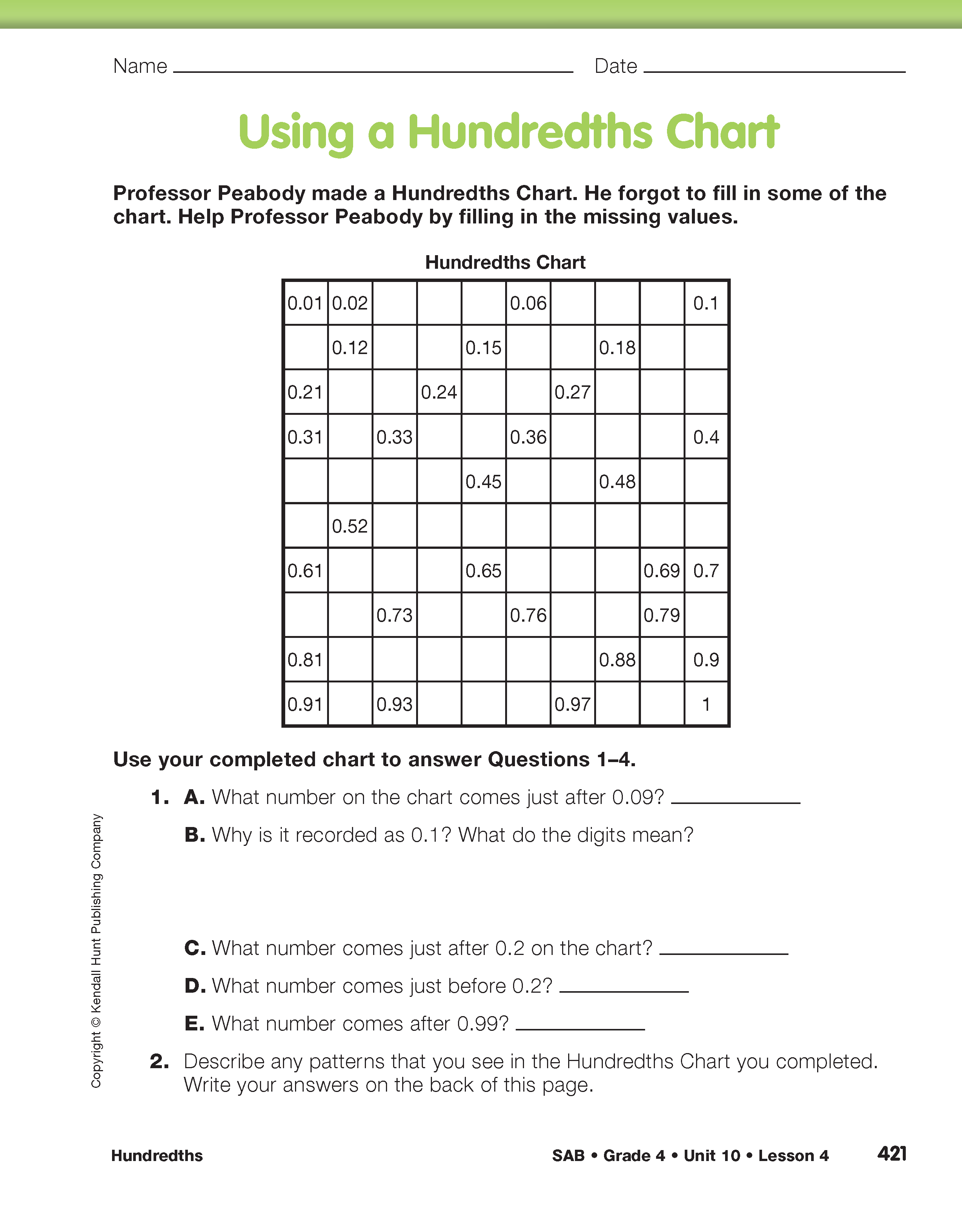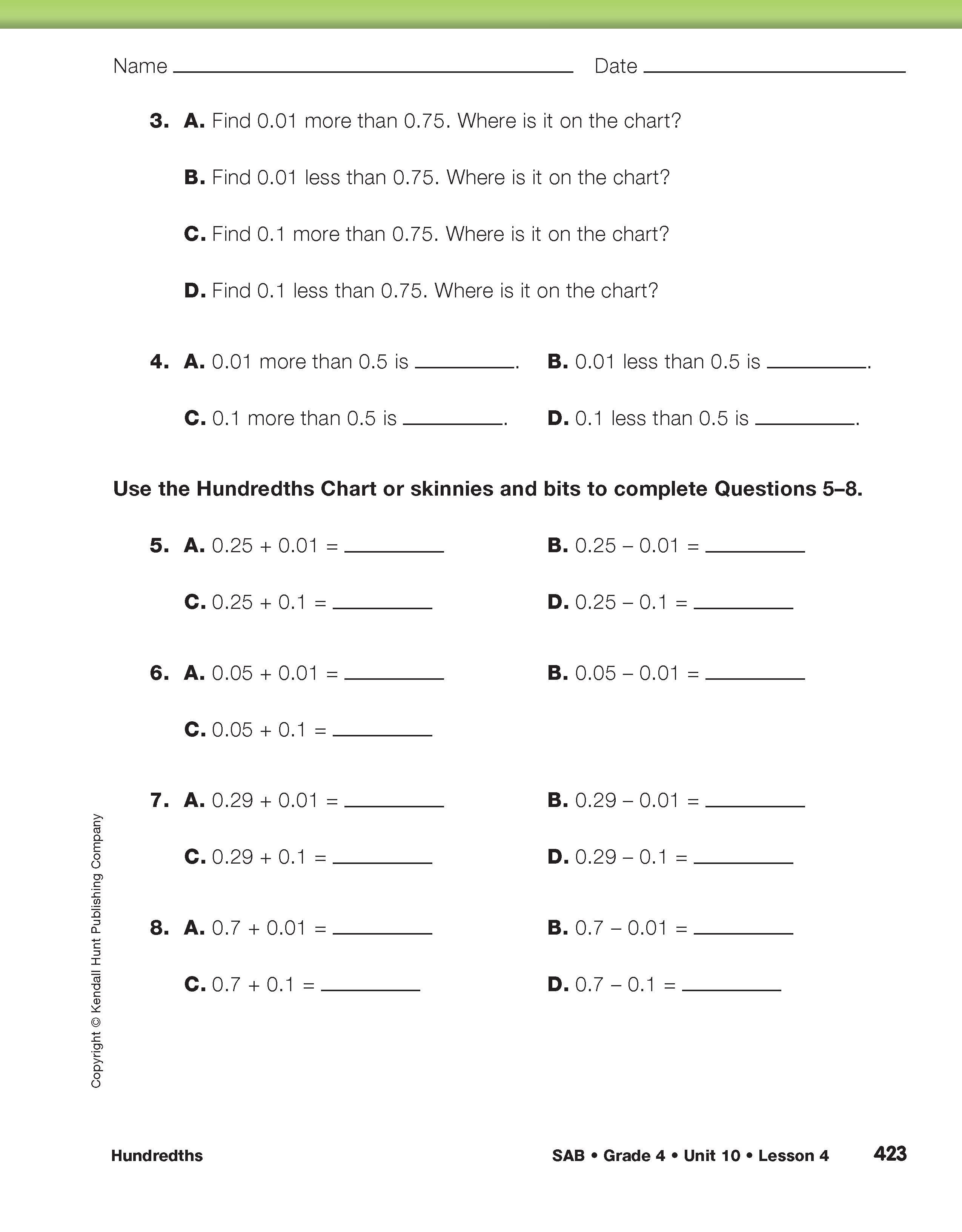Hundredths
Est. Class Sessions: 2–4Developing the Lesson
Part 2. Using a Hundredths Chart
Complete the Chart. Refer students to the Using a Hundredths Chart pages in the Student Activity Book. Display the Hundredths Chart and ask students to skip count by hundredths starting at one-hundredth and going to ten-hundredths. Note that ten-hundredths and one-tenth are equivalent when filling in the missing numbers.
Ask:
Have students complete the Hundredths Chart on their own, comparing their work with a partner.
Patterns on the Hundredths Chart. Have pairs complete Questions 1 and 2 on the Using a Hundreths Chart pages in the Student Activity Book. Then have them describe their patterns from Question 2 to the class using the displayed Hundredths Chart. Encourage the class to ask presenters clarifying questions. Facilitate the conversation by asking questions that will connect the patterns to the numbers. You can display a 100 Chart for comparison. See the sample dialog.
Adding and Subtracting 0.01 and 0.1. Have students complete Questions 3–8 on the Using a Hundredths Chart pages in the Student Activity Book on their own so they develop their own strategies for adding and subtracting 0.01 and 0.1 using the Hundredths Chart.
As students work, ask:
Have students discuss strategies for moving on the chart. In particular, discuss what happens at the beginning and end of the rows as in Questions 7 and 8.
Assign the Many Ways to Show Hundredths page in the Student Activity Book for homework.














